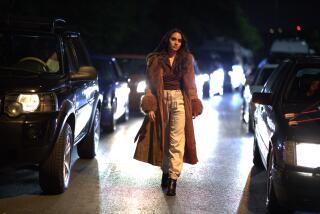These Persian Ensembles Blend the Traditional With the New
- Share via
The Persian Arts Society continued its quest to showcase the traditional and contemporary arts of Iran with “an evening of ecstatic music and dance” on Saturday at the Wilshire-Ebell Theatre. Titled “Nava & Namah” (Sound & Reverence) the lengthy but illuminating program featured the music of the Dastan Ensemble and the dancing of the Namah Ensemble.
Persian classical music is a sophisticated art form, a surprisingly compatible blending of a highly structured approach to melody and rhythm with an ecstatic improvisational vision.
The Dastan Ensemble, including Hamid Motebassem on tar and setar (long-necked, multi-stringed instruments), Hossein Behroozi-Nia on barbat (oud or lute) and Pejman Hadadi on tombak (chalice-shaped drum), brilliantly expanded that vision, remaining in firm contact with tradition while adding a decidedly contemporary slant to the program.
Motebassem’s soloing, especially on setar, made the most of the instrument’s sensuous, vocalized sound, arching easily through the music’s sensuous semitones. Behroozi-Nia often joined Motebassem in phrase-following improvisations, while the masterful Hadadi delivered an astonishing array of sounds.
The Namah Ensemble’s performance of “Glimpses into a journey of seekers after the unknown,” previously reviewed in The Times, was accompanied by Hadadi and percussionist Brad Dutz. The duo’s musical backing was the perfect accompaniment for the elegant whirling of lead dancer Banafsheh Sayyad and her talented ensemble.
More to Read
The biggest entertainment stories
Get our big stories about Hollywood, film, television, music, arts, culture and more right in your inbox as soon as they publish.
You may occasionally receive promotional content from the Los Angeles Times.
![LOS ANGELES, CA - JUNE 17: [Cody Ma and Misha Sesar share a few dishes from their Persian Restaurant Azizam] on Monday, June 17, 2024 in Los Angeles, CA. (Ethan Benavidez / For The Times)](https://ca-times.brightspotcdn.com/dims4/default/7ffc7f6/2147483647/strip/true/crop/5110x3417+306+0/resize/320x214!/quality/75/?url=https%3A%2F%2Fcalifornia-times-brightspot.s3.amazonaws.com%2F79%2Fdc%2F4d29255545f5b9813315901692bc%2F1459972-fo-azizam-review20-eba.JPG)









